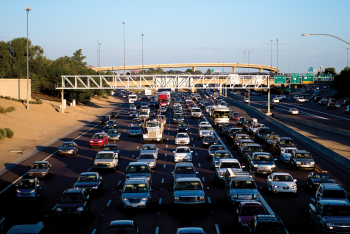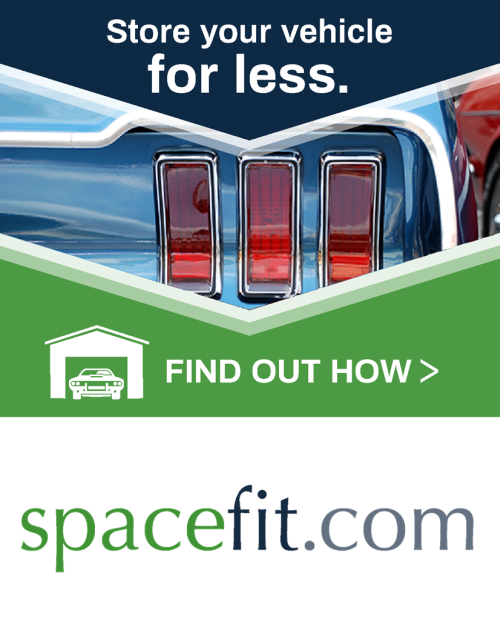Latest News From Bumper to Bumper Radio
12 News tries a monsoon driving simulator for the best tips on how to drive safely in a monsoon storm.

COLUMBUS, Ohio, July 25, 2018 -- As the summer hits its midpoint, drivers embark on one of the most dangerous periods on America's roadways. In fact, the month of August continues to be the deadliest driving month of the year:
Nationwide members reported more accidents in August 2016 (60,976) than any other month over the last four years.
15,914 people died in motor vehicle crashes in August during a five-year span (2012-2016), ranking it as the deadliest driving month of the year, according to the Insurance Institute for Highway Safety.
August 2 is the deadliest driving day of the year. There were more traffic fatalities (505) due to motor vehicle crashes on this date than any other of the calendar year over a five-year span (2012-2016), according to the Insurance Institute for Highway Safety.
Aggregated data collected through Nationwide's SmartRide program from drivers across 22 states* shows that the biggest contributing factors to auto accidents are hard braking, suddenly speeding up and time spent in congested driving conditions (which is approximated by time spent idling).
Based on more than 600,000 members and more than 1.3 million vehicles enrolled in the SmartRide program last August, Nationwide has identified which states show the highest frequency of factors known to contribute to auto accidents:
Hard breaking: Arizona, Georgia and New York
SmartRide drivers in Arizona had 2.6 hard breaking incidents per 100 miles driven last August, which ranked as the highest of any state in any month of 2017. Concurrently, 15.8 percent of Arizona SmartRide drivers' time in August was spent idling, the most of any month of the year for drivers in the Grand Canyon state.

Volatility is the trend for July gas prices as the rate for crude oil rises and drops amid lingering geopolitical concerns. In the U.S., the first half of the month saw pump prices increase from $2.85 to $2.89, while the second half is proving cheaper with the national gas price average down to $2.84 today. The national average has not been this low since early May.
“July gas prices have been on a roller coaster ride, but appear to be on a downward slope at the moment. If demand and supply stay consistent, prices have the potential to stabilize barring any major events – geopolitical or natural disasters,” said Jeanette Casselano, AAA spokesperson. “The market is also following this up and down trend lately. Last week, crude prices dropped below $70/bbl for the first time since June, but then returned above the price point to close out the week.”
On the week, Hawaii (+1 cent) was the only state to see gas prices increase, Montana ($2.93) was the only state whose gas price average held steady, while all other states saw prices drop as much as 13 cents.
Today’s national gas price average is four cents cheaper than last week, two cents cheaper than last month, but 57-cents more expensive than a year ago. Motorists can find gas for $2.76 or more at 52 percent of stations across the country.
Quick Stats
The nation’s top 10 least expensive markets are: Alabama ($2.54), South Carolina ($2.54), Mississippi ($2.54), Arkansas ($2.58), Louisiana ($2.58), Oklahoma ($2.60), Virginia ($2.61), Tennessee ($2.61), Texas ($2.61) and Missouri ($2.61).
The nation’s top 10 largest monthly changes are: New Mexico (-13 cents), Arizona (-12 cents), Nevada (-8 cents), Delaware (+8 cents), Utah (-8 cents), Nebraska (-7 cents), Ohio (+7 cents), Texas (-6 cents), Idaho (-6 cents) and California (-5 cents).
West Coast
Motorists in states in the West Coast region are paying the most expensive pump prices in the country: Hawaii ($3.78), California ($3.63), Washington ($3.41), Alaska ($3.38), Oregon (3.29), Nevada ($3.20) and Arizona ($2.94). Still, gas price averages in the majority of states in the region have declined on the week, with Arizona (-3 cents) leading the way. Only Hawaii (+1 cent) saw an increase.
According to the Energy Information Administration’s (EIA) petroleum status report for the week ending on July 13, inventories of gasoline in the region dropped by 500,000 bbl. They now sit at 30.3 million bbl, which is nearly 3.5 million bbl higher than total levels at this time last year. The surplus will likely help guard against price spikes in the event that supply tightens in the region this week.

Entry level model price reduction of $1,350
All electric driving range increases to 28 miles; EPA total driving range increases by 10 miles to an impressive 600 miles
New instrument panel center stack, steering wheel and infotainment features
New available safety features include Automatic Emergency Braking and Lane Keep Assist
FOUNTAIN VALLEY, Calif., July 19, 2018 -- The refreshed 2018 Hyundai Sonata Plug-In Hybrid (PHEV) adopts the same distinctive design of the recently released Sonata gasoline and Hybrid models while delivering 28 miles of all-electric range, feature enhancements and a lower starting price. The starting price for the 2018 Sonata Hybrid Plug-In is $33,250, a $1,350 reduction from the 2017 model, furthering the value-added benefits of Hyundai eco-friendly vehicles. The price of Sonata Plug-in Hybrid Limited model increases by $250, but now comes with all these new features:

WOBURN, Mass., July 17, 2018 - Terrafugia, Inc. announced new features in the Transition® production vehicle, a two-seat auto and aircraft, including updates to the interior, safety systems, motor, and flight instrumentation. The latest features and systems will be incorporated and verified in the next test vehicles. The first production vehicles will come to market in 2019.
"Developing this new technology has allowed us to test several different mechanisms and generate process improvements along the way," said Terrafugia CEO Chris Jaran. "We are at the critical point where we can implement the best design features based on years of flight and drive testing. This will improve function, safety and aesthetics for the optimal flying and driving experience."
Each individual component is engineered with safety and quality as the objective behind each design decision. The Transition® improvements will include:



















